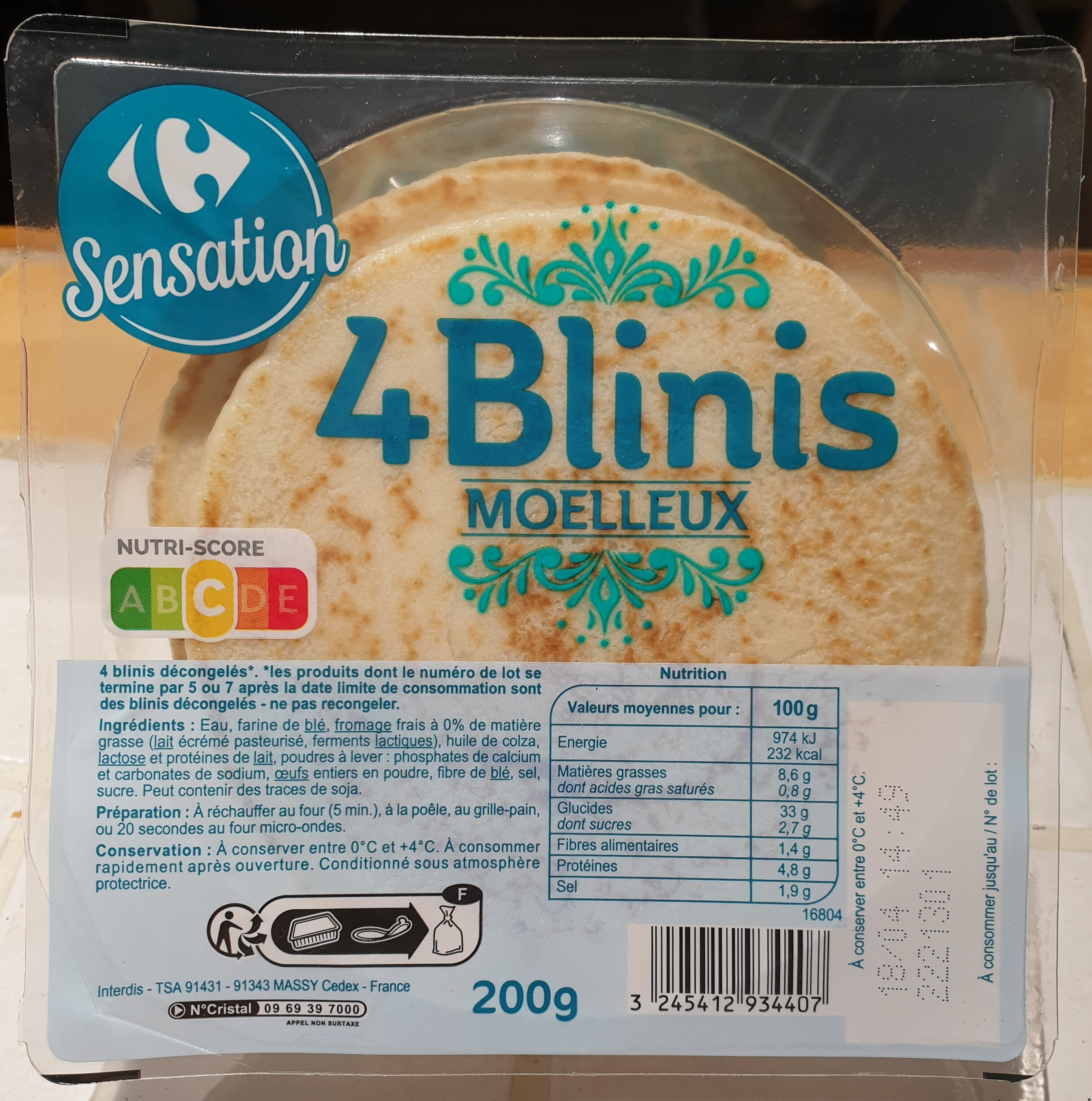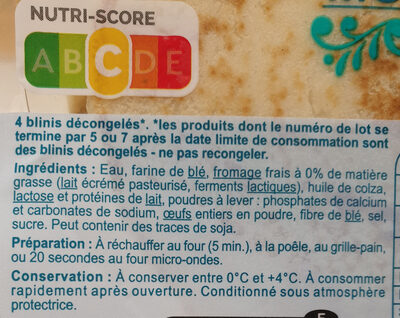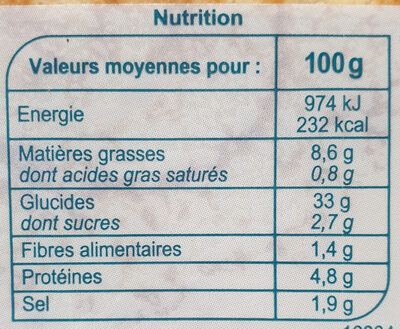4 Blinis Moelleux - Carrefour - 200 g
This product page is not complete. You can help to complete it by editing it and adding more data from the photos we have, or by taking more photos using the app for Android or iPhone/iPad. Thank you!
×
Some of the data for this product has been provided directly by the manufacturer Carrefour.
Barcode: 3245412934407 (EAN / EAN-13)
Common name: 4 blinis décongelés* *les produits dont le numéro de lot se termine par 5 ou 7 après la date limite de consommation sont des blinis décongelés - ne pas recongeler.
Quantity: 200 g
Packaging: Plastic, Fresh, Tray
Brands: Carrefour
Categories: Snacks, Salty snacks, Appetizers, fr:Blinis
Labels, certifications, awards: Do not freeze again, Made in France, New recipe, Nutriscore, Nutriscore Grade C
Producer: Fabriqué en France par EMB 14712A pour Interdis.
Manufacturing or processing places: France
Traceability code: EMB 45093B - Chevilly (Loiret, France), EMB 14712A - Troarn (Calvados, France)
Stores: Carrefour, carrefour.fr
Countries where sold: France
Matching with your preferences
Environment
Carbon footprint
Packaging
Transportation
Other information
Other information: Picto GDA x4 Nouvelle recette
Preparation: À réchauffer au four (5 min.), à la poêle, au grille-pain, ou 20 secondes au four micro-ondes.
Conservation conditions: À conserver entre 0°C et +4°C. À consommer rapidement après ouverture. Conditionné sous atmosphère protectrice.
Customer service: Interdis - TSA 91431 - 91343 MASSY Cedex - France
Report a problem
Data sources
Product added on by sebleouf
Last edit of product page on by kiliweb.
Product page also edited by carrefour, date-limite-app, driveoff, ecoscore-impact-estimator, fpdsurveys, gabrielbe, hungergames, openfoodfacts-contributors, org-carrefour, ovis, packbot, quechoisir, roboto-app, yuka.U3FZWVQ2UUxoZHRRbDg4ZzJ6L0w5ODVrbk1Td2NubStDdW8vSUE9PQ, yuka.WXFzQkVLUXZyY1VUbmMxaTBVaUwzK05xMjYyQVhYR3BHZE1CSWc9PQ.











